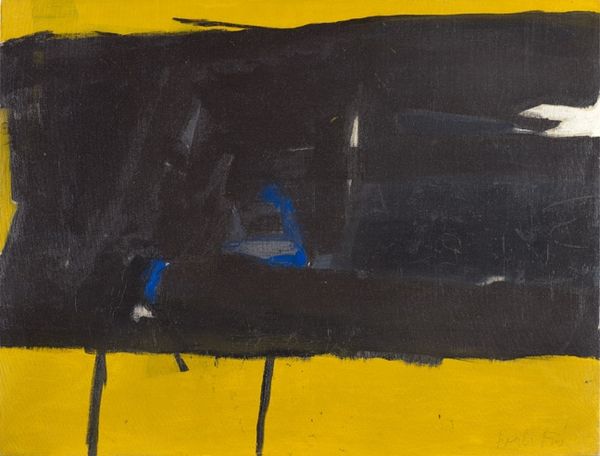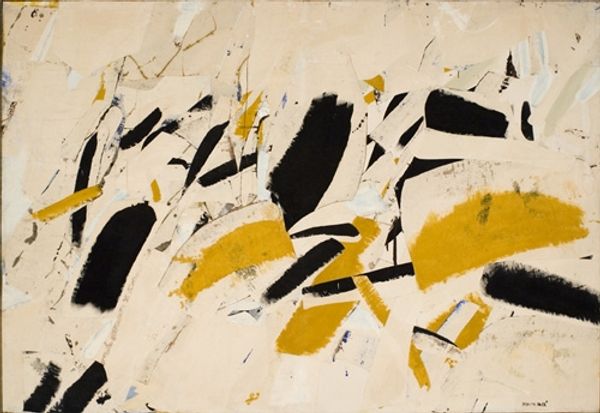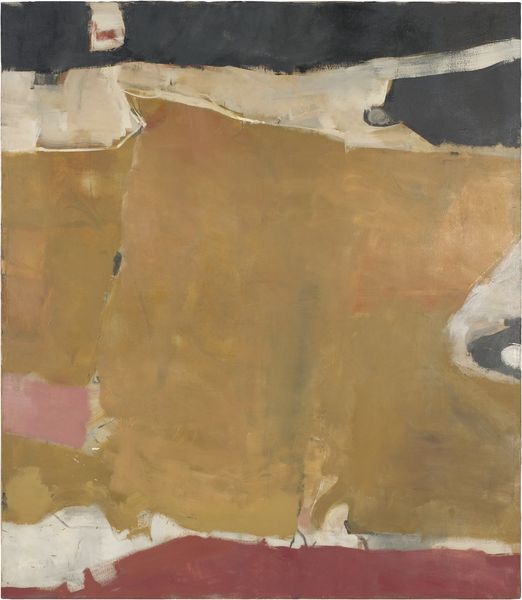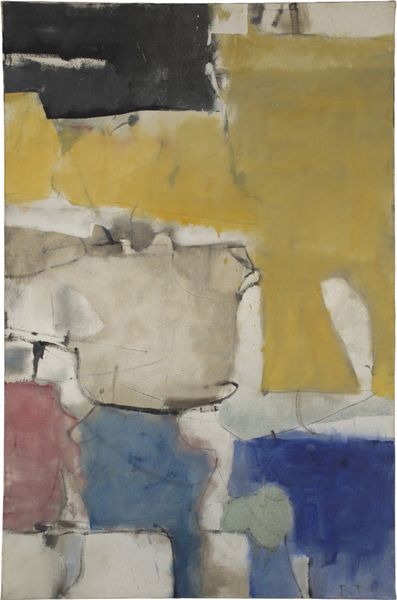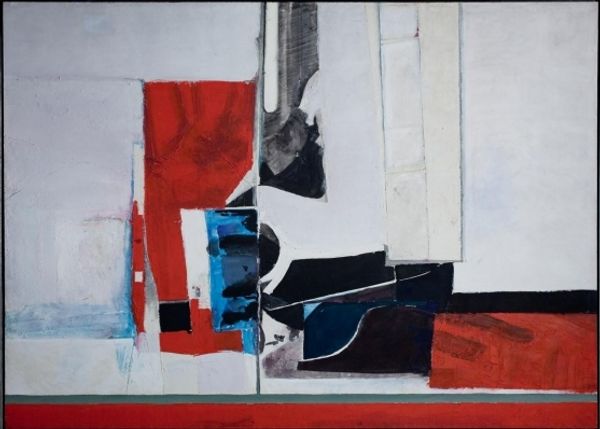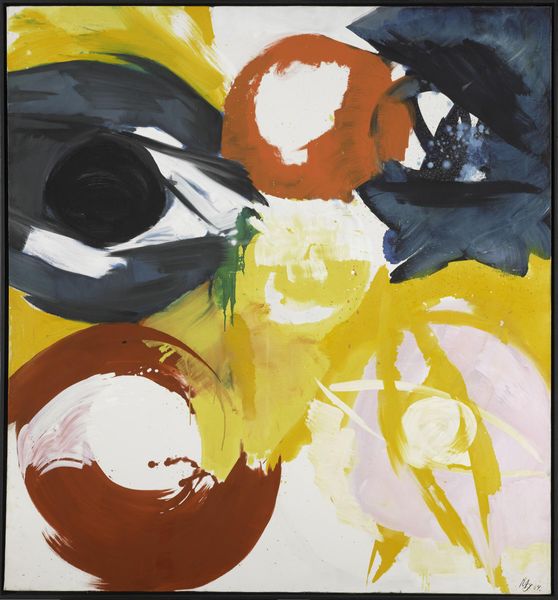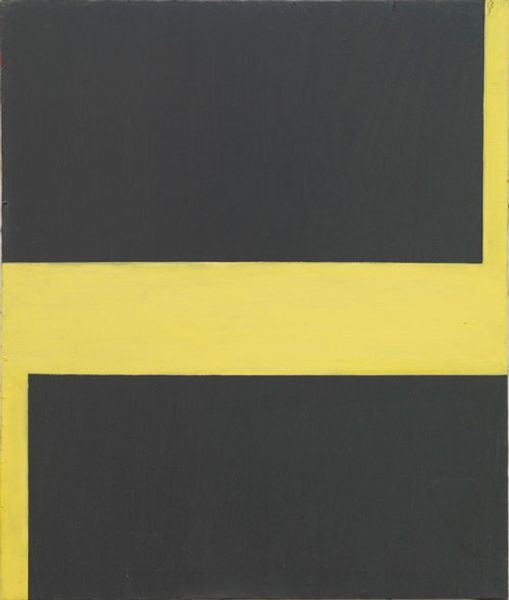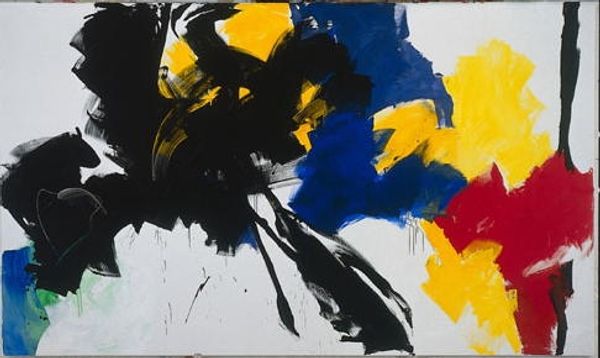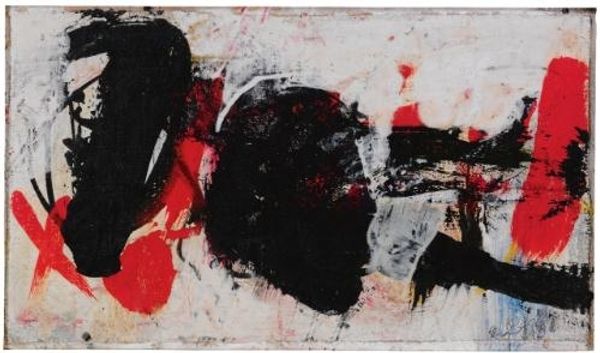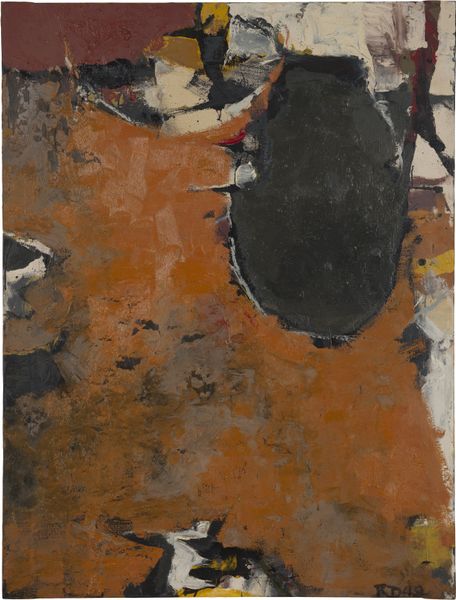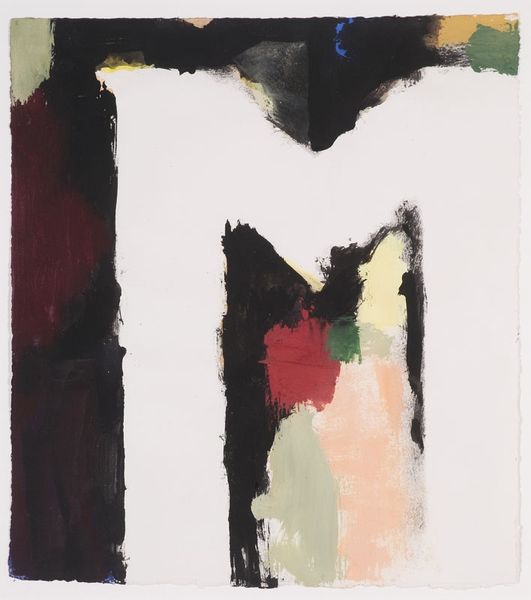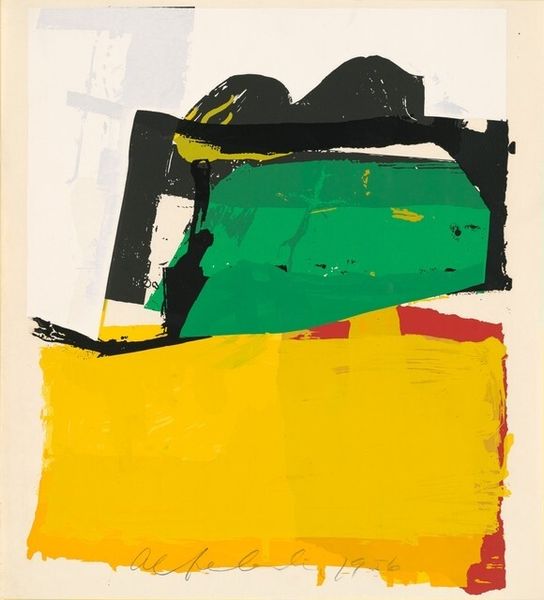
Dimensions: support: 2440 x 3050 mm
Copyright: © Dedalus Foundation, Inc/VAGA, New York and DACS, London 2014 | CC-BY-NC-ND 4.0 DEED, Photo: Tate
Editor: Here we have Robert Motherwell’s large-scale painting, *Elegy to the Spanish Republic #132*. I’m really struck by the stark contrast between the black and white. What do you see in this piece? Curator: Well, I see bullfights, loss, and a kind of primal scream rendered in paint. The repetitive ovals and rectangles – Motherwell called them 'basic shapes of human feeling' – evoke a somber dance of life and death. You can almost feel the weight of history. Editor: A dance of life and death… I like that. It's far more evocative than just black and white shapes! Curator: Exactly! Motherwell wasn't just painting shapes; he was painting emotions, channeling the collective grief of a nation. It's a bold statement, isn't it? Editor: It is. I definitely see it differently now. Thanks!
Comments
tate 6 months ago
⋮
http://www.tate.org.uk/art/artworks/motherwell-elegy-to-the-spanish-republic-132-t07950
Join the conversation
Join millions of artists and users on Artera today and experience the ultimate creative platform.
tate 6 months ago
⋮
The combination of oval and elongated forms runs through Motherwell’s long series of Elegies to the Spanish Republic, of which this is a late example. Combining precise drawing and expressive gesture he fashioned a loose black structure that embodied the landscape, bravura and tragedy of Spain. The impetus came from Motherwell’s sympathy for the plight of Spain as a result of Franco’s long dictatorship. Another important source was Federico García Lorca’s Lament for Ignacio Sánchez Mejías, commemorating the death of a bullfighter. Gallery label, July 2012
